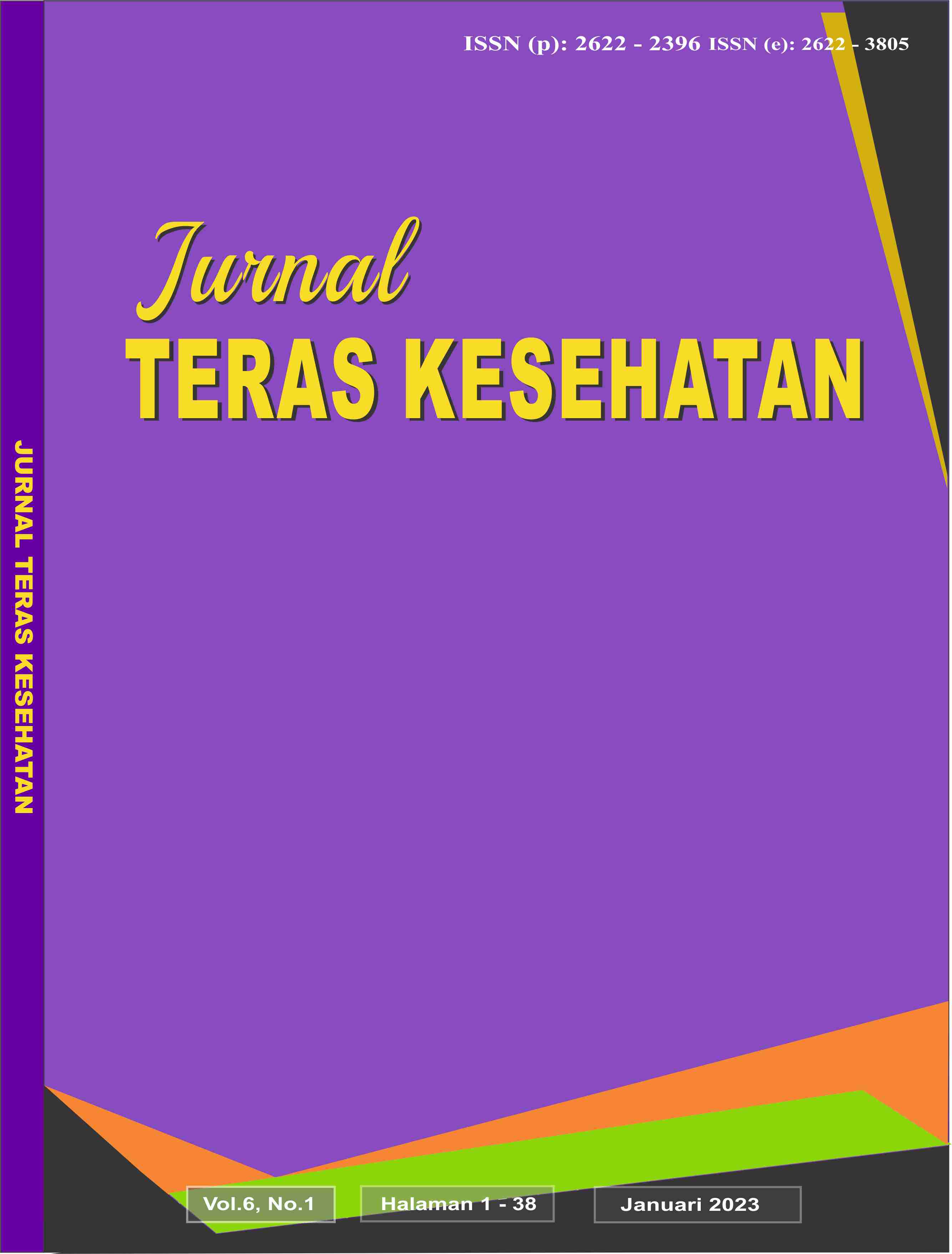Perilaku Merokok Dalam Pandangan Islam
DOI:
https://doi.org/10.38215/jtkes.v6i1.108Keywords:
Islamic Law, smoking behavior, smoking impact.Abstract
Smoking is a very common behavior or habit in Indonesia. However, in the long term, this behavior is very dangerous for health because the content in cigarettes can cause various health problems. In this decade, there has been a significant increase in the number of adult smokers by 8.8 million people, from 60.3 million in 2011 to 69.1 million smokers in 2021, as recorded in the Global Adult Tobacco Survey (GATS). Even though many people are aware of the dangers of smoking, cigarette enthusiasts, especially in Indonesia, are increasing every year. The problem regarding the increasing number of cigarette users never stops and always raises pros and cons it. A review of Islamic law regarding smoking can also be a factor in the amount of cigarette consumption. At present, the management of the Indonesian Ulema Council (MUI) forbids smoking on the basis that the consequences of smoking are more than the benefits provided by smoking; however, several other scholars have a different view of making smoking illegal because these scholars have found no evidence that prohibits smoking. cigarette. Objective: To determine the effect of the pandemic and Islamic law on smoking behavior.
Downloads
References
Akhadi, M. (2000). Dasar-Dasar Proteksi Radiasi. Jakarta: PT. Rineka Cipta.
Al-Bashaireh, A. M., Haddad, L. G., Weaver, M., Kelly, D. L., Chengguo, X., & Yoon, S. (2018). The Effect of Tobacco Smoking on Musculoskeletal Health: A Systematic Review. Journal of Environmental and Public Health, 2018. https://doi.org/10.1155/2018/4184190
Awaludin, R. (2011). Radioisotop Teknisum-99m dan Kegunaannya. Buletin Alara BATAN, 61-65.
Fernanda, A. R. (2015, Februari 17). Diambil kembali dari Hubungan Kualitas Pelayanan terhadap kepuasan konsumen di laboratorium Prodia Bandung: http://repository.widyatama.ac.id/xmlui/handle/123456789/2754
Hanum, H., & Wibowo, A. (2017). Pengaruh Paparan Asap Rokok Lingkungan pada Ibu Hamil terhadap Kejadian Berat Bayi Lahir Rendah. Jurnal Kedokteran Unila, 5(5), 22–26.
Groneberg, K.-O. H. & D. (2016). Tobacco or Health? 2nd Edition (2nd ed.). Springer.
Kodir, K., & Anggarawati, T. (2022). Hubungan Ketergantungan Rokok Dengan Kadar Karbonmonoksida Udara Ekspirasi Pada Mahasiswa Akper Kesdam Iv/Diponegoro Semarang. Jurnal Pengabdian Kepada Masyarakat Sisthana, 3(2), 1–5. https://doi.org/10.55606/pkmsisthana.v3i2.6
Marisa, M., & Lestari, R. (2021). Perbandingan Kadar Hemoglobin Pengguna Rokok Elektrik Dani Rokok Biasa. 4(2), 124–128.
Martha, R. D., & Milvita, D. (2014). Penentuan Biodistribusi Tc-99m Perteknetat Menggunakan Teknik ROI pada Pasien Hipertiroid (Struma Difusa). Jurnal Fisika Universitas Andalas, 45-52.
Nurhayati, E., Bu’ulolo, I., & Ndruru, S. (2021). Penyuluhan bahaya rokok di SMA Bayangkara Medan. Jurnal Mitra Keperawatan Dan Kebidanan Prima, 2(1).
Palantei, P. P., & Hilal, F. (2021). Metode Penalaran Hukum Islam Dalam Hukum Merokok; Studi Komparasi Terhadap Metode Ijtihad Bahtsul Masail Nahdatul Ulama Dan Majelis Tarjih Muhammadiyah. Shautuna: Jurnal Ilmiah Mahasiswa Perbandingan Mazhab Dan Hukum, 206–218. https://doi.org/10.24252/shautuna.v2i1.14830
Prabowo, B., Rosida, T., & Ahmad, H. (2020). Hubungan Klasifikasi Perokok dengan Kesehatan Jaringan Periodontal Masyarakat yang Merokok di Pulau Harapan diukur dengan Skor CIPTN. Jurnal Riset Hesti Medan Akper Kesdam I/BB Medan, 5(2), 91. https://doi.org/10.34008/jurhesti.v5i2.195
Pramonodjati, F., Prabandari, A. S., Angelo, F., & Sudjono, E. (2019). Pengaruh Perokok Terhadap Adanya C – Reaktive Protein (CRP). Jurnal Ilmiah Rekam Medis Dan Informatika Kesehatan, 9(2), 1–6.
Rezi, M., Sasmiarti, S., & Helfi, H. (2018). MEROKOK DALAM TINJAUAN HUKUM ISLAM (Studi Nash-Nash Antara Haram Dan Makruh). ALHURRIYAH: Jurnal Hukum Islam (ALHURRIYAH JOURNAL OF ISLAMIC LAW), 3(1), 53. https://doi.org/10.30983/alhurriyah.v3i1.534
Septiani, C. A., & Sodik, M. A. (2021). Penyakit yang dapat ditimbulkan oleh rokok. OSF Preprints, 5(1), 1–3.
Yang, B., Owusu, D., & Popova, L. (2020). Effects of a nicotine fact sheet on the perceived risk of nicotine and e-cigarettes and intentions to seek information about and use e-cigarettes. International Journal of Environmental Research and Public Health, 17(1). https://doi.org/10.3390/ijerph17010131
Yang, I., Sandeep, S., & Rodriguez, J. (2020). The oral health impact of electronic cigarette use: a systematic review. Critical Reviews in Toxicology, 50(2), 97–127. https://doi.org/10.1080/10408444.2020.1713726
Zulaikhah, V., Wijayadi, K., & Juliyanto, E. (2021). Evaluasi Hasil Edukasi Masyarakat Tentang Bahaya Kandungan Dalam Rokok. Indonesian Journal of Natural Science Education (IJNSE), 4(2), 510–515. https://doi.org/10.31002/nse.v4i2.1904

Downloads
Published
Issue
Section
License
Copyright (c) 2023 Jurnal Teras Kesehatan

This work is licensed under a Creative Commons Attribution-ShareAlike 4.0 International License.
Authors who publish articles in Jurnal Teras Kesehatan agree to the following terms:
- Authors retain copyright of the article and grant the journal the right of first publication with the work simultaneously licensed under a CC-BY-SA or the Creative Commons Attribution–ShareAlike License.
- Authors can enter into separate, additional contractual arrangements for the non-exclusive distribution of the journal's published version of the work (e.g., post it to an institutional repository or publish it in a book), with an acknowledgment of its initial publication in this journal.
Authors are permitted and encouraged to post their work online (e.g., in institutional repositories or on their website) prior to and during the submission process, as it can lead to productive exchanges, as well as earlier and greater citation of published work (See The Effect of Open Access)











